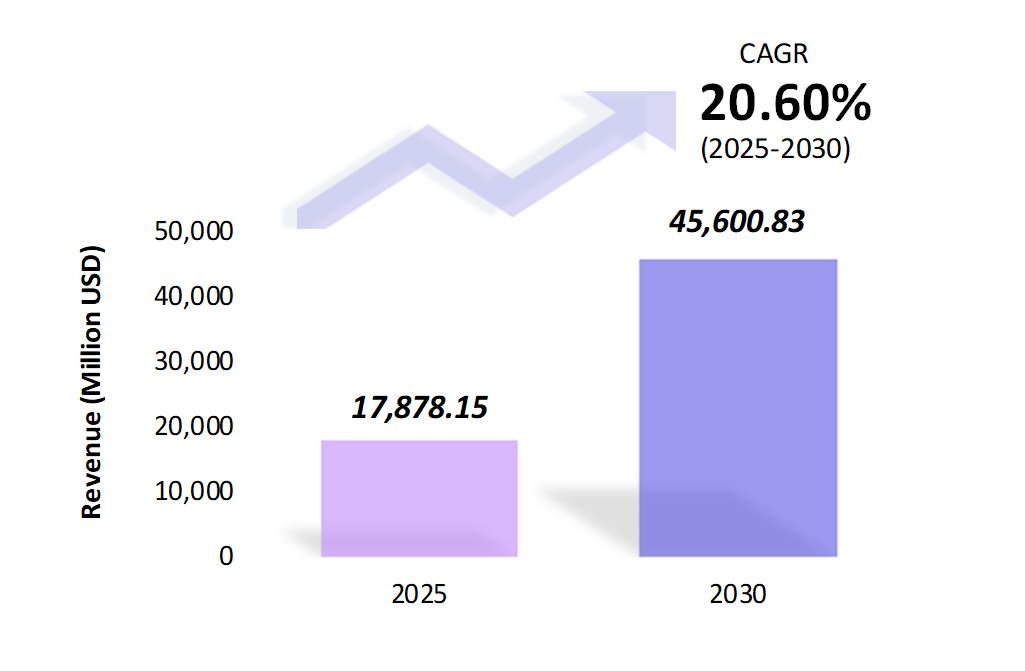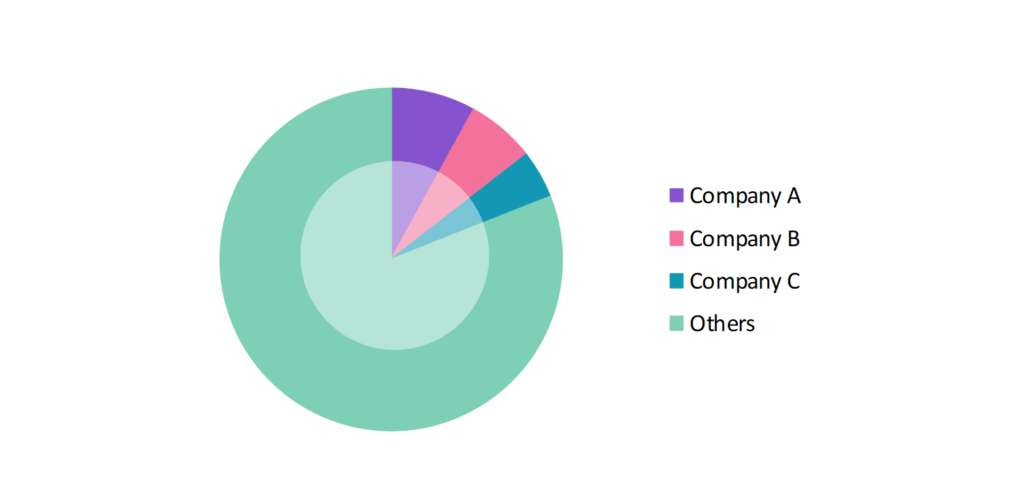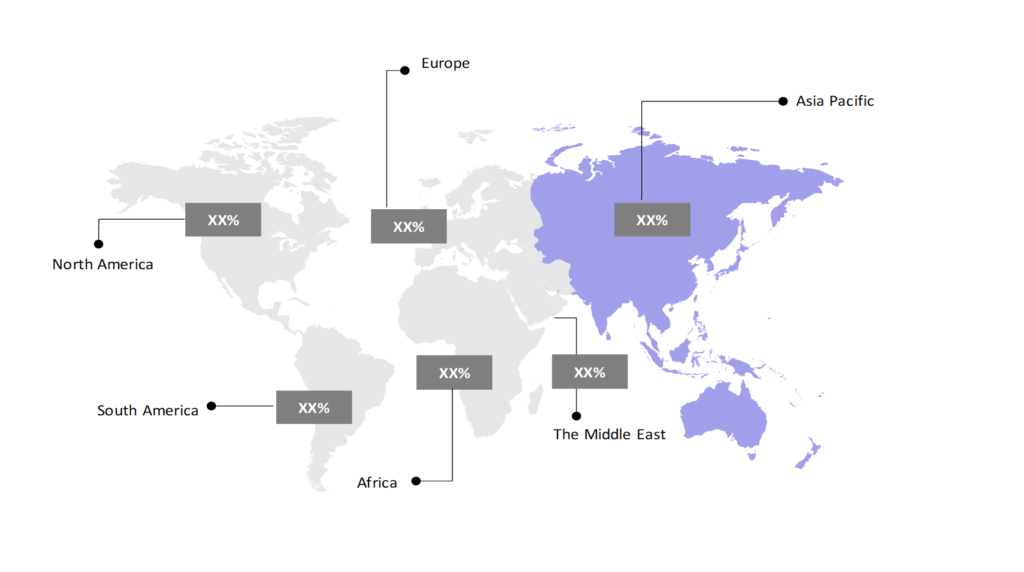Electric Construction Equipment Market Outlook: Size, Share, Trends & Growth Analysis (2024-2029)
The market report provided a comprehensive analysis segmented by Type (Excavators, Loaders, Cranes, Dozers, Others); by Battery Type (Lithium Ion, Lead Acid, Others); by Application (Construction, Mining, Material Handling, Others); by Geography (North America, South America, Asia Pacific, Europe, The Middle East, Africa).
Outlook

- The electric construction equipment market is estimated to be at USD 17,878.15 Mn in 2025 and is anticipated to reach USD 45,600.83 Mn in 2030.
- The electric construction equipment market is registering a CAGR of 20.6% during the forecast period 2025-2030.
- The electric construction equipment (ECE) market is expanding due to sustainability demands and environmental regulations, offering battery-powered alternatives to traditional diesel machinery with benefits like lower emissions and quieter operation.
Request a free sample.
Ecosystem

- The participants in the global electric construction equipment industry are investing in battery technology and autonomous features to enhance equipment performance.
- These companies focus on reducing emissions not only from their equipment but also in their production processes, along with collaborations between companies and technology providers to expand their market reach and maintain a competitive edge in the market.
- Several important entities in the electric construction equipment market include Caterpillar Inc.; Komatsu Ltd.; AB Volvo; Hitachi Construction Machinery Co., Ltd.; Deere & Co.; and others.
Ask for customization.
Findings
| Attributes | Values |
|---|---|
| Historical Period | 2019-2023 |
| Base Year | 2024 |
| Forecast Period | 2025-2030 |
| Market Size (2025) | USD 17,878.15 Mn |
| Market Size (2030) | USD 45,600.83 Mn |
| Growth Rate | 20.6% CAGR from 2025 to 2030 |
| Key Segments | Type (Excavators, Loaders, Cranes, Dozers, Others); Battery Type (Lithium Ion, Lead Acid, Others); Application (Construction, Mining, Material Handling, Others); Geography (North America, South America, Asia Pacific, Europe, The Middle East, Africa) |
| Key Vendors | Caterpillar Inc.; Komatsu Ltd.; AB Volvo; Hitachi Construction Machinery Co., Ltd.; Deere & Co. |
| Key Countries | The US; Canada; Mexico; Brazil; Argentina; Colombia; China; Singapore; Japan; South Korea; The UK; Germany; France; Turkey; UAE; Israel; Egypt; South Africa |
| Largest Market | Asia Pacific |
Get a free quote.
Trends
- Smart Charging Solutions: The rise of smart charging solutions for electric construction equipment enables efficient charging management, especially on large construction sites. These solutions reduce downtime by optimizing charge schedules and can support simultaneous charging for multiple units.
- Increased Use of Telematics: Telematics systems in electric construction equipment allow for real-time monitoring of energy consumption, location, and equipment health. This data-driven approach helps operators optimize energy use, reduce downtime, and extend the life of the equipment.
- Growing Focus on Lightweight Materials: Lightweight materials, like carbon composites and high-strength alloys, are being incorporated into electric construction equipment to reduce weight and improve energy efficiency. Lighter equipment allows for longer operation times per charge, increasing overall productivity. In 2023, Bobcat utilized carbon fiber in its new electric skid steer loader to reduce weight by 15%, significantly enhancing battery performance.
Speak to analyst.
Catalysts
- Stringent Emission Regulations: Governments across Europe, North America, and Asia are implementing stricter emission regulations like mandatory carbon emission caps, encouraging the adoption of electric construction equipment to reduce greenhouse gas emissions. This regulatory push is prompting construction companies to replace diesel equipment with electric alternatives. For example, the European Green Deal targets zero emissions by 2050, influencing companies across Europe to adopt cleaner construction practices and invest in ECE.
- Rising Fuel Costs: Fluctuating fuel prices and the increasing costs of diesel are driving construction firms to seek cost-effective alternatives. Electric construction equipment, with its lower energy costs, is proving to be an economical option in the long term.
- Focus on Sustainability in Construction: The growing emphasis on sustainable building practices is encouraging construction companies to invest in electric construction equipment. The reduced carbon footprint aligns with corporate sustainability goals and enhances a company’s market image.
Inquire before buying.
Restraints
- High Costs for Equipment Manufacturing: Electric construction equipment comes with a higher upfront cost compared to conventional equipment, largely due to battery expenses and advanced electronics. The price difference can be a deterrent for smaller construction companies with limited budgets.
- Battery Limitations: The limitations of current battery technology create significant constraints for electric construction equipment, particularly in heavy-duty applications where extended operation is needed. These restrictions pose challenges for projects requiring continuous machinery use.
- Operational Limitations in Extreme Environments: Electric construction equipment faces operational challenges in extreme climates, such as cold weather, which can reduce battery performance and operational efficiency. Construction companies operating in such regions find it challenging to rely solely on electrical equipment.
Personalize this research.
Hotspot

Explore purchase options.
Table of Contents
| 1. Introduction 1.1. Research Methodology 1.2. Scope of the Study 2. Market Overview / Executive Summary 2.1. Global Electric Construction Equipment Market (2019 – 2023) 2.2. Global Electric Construction Equipment Market (2024 – 2030) 3. Market Segmentation 3.1. Global Electric Construction Equipment Market by Type 3.1.1. Excavators 3.1.2. Loaders 3.1.3. Cranes 3.1.4. Dozers 3.1.5. Others 3.2. Global Electric Construction Equipment Market by Battery Type 3.2.1. Lithium Ion 3.2.2. Lead Acid 3.2.3. Others 3.3. Global Electric Construction Equipment Market by Application 3.3.1. Construction 3.3.2. Mining 3.3.3. Material Handling 3.3.4. Others 4. Regional Segmentation 4.1. North America 4.1.1. The US 4.1.2. Canada 4.1.3. Mexico 4.2. South America 4.2.1. Brazil 4.2.2. Argentina 4.2.3. Colombia 4.2.4. Rest of South America 4.3. Asia Pacific 4.3.1. China 4.3.2. Singapore 4.3.3. Japan 4.3.4. South Korea 4.3.5. Rest of Asia Pacific 4.4. Europe 4.4.1. The UK 4.4.2. Germany 4.4.3. France 4.4.4. Rest of Europe 4.5. The Middle East 4.5.1. Turkey 4.5.2. UAE 4.5.3. Israel 4.5.4. Rest of the Middle East 4.6. Africa 4.6.1. Egypt 4.6.2. South Africa 4.6.3. Rest of Africa 5. Value Chain Analysis of the Global Electric Construction Equipment Market 6. Porter Five Forces Analysis 6.1. Threats of New Entrants 6.2. Threats of Substitutes 6.3. Bargaining Power of Buyers 6.4. Bargaining Power of Suppliers 6.5. Competition in the Industry 7. Trends, Drivers and Challenges Analysis 7.1. Market Trends 7.1.1. Market Trend 1 7.1.2. Market Trend 2 7.1.3. Market Trend 3 7.2. Market Drivers 7.2.1. Market Driver 1 7.2.2. Market Driver 2 7.2.3. Market Driver 3 7.3. Market Challenges 7.3.1. Market Challenge 1 7.3.2. Market Challenge 2 7.3.3. Market Challenge 3 8. Opportunities Analysis 8.1. Market Opportunity 1 8.2. Market Opportunity 2 8.3. Market Opportunity 3 9. Competitive Landscape 9.1. Caterpillar Inc. 9.2. Komatsu Ltd. 9.3. AB Volvo 9.4. Hitachi Construction Machinery Co., Ltd. 9.5. Deere & Co. 9.6. Company 6 9.7. Company 7 9.8. Company 8 9.9. Company 9 9.10. Company 10 |
Know the research methodology.
Electric Construction Equipment Market – FAQs
1. What is the current size of the electric construction equipment market?
Ans. In 2025, the electric construction equipment market size is USD 17,878.15 Mn.
2. Who are the major vendors in the electric construction equipment market?
Ans. The major vendors in the electric construction equipment market are Caterpillar Inc.; Komatsu Ltd.; AB Volvo; Hitachi Construction Machinery Co., Ltd.; Deere & Co.
3. Which segments are covered under the electric construction equipment market segments analysis?
Ans. The electric construction equipment market report offers in-depth insights into Type, Battery Type, Application, and Geography.
